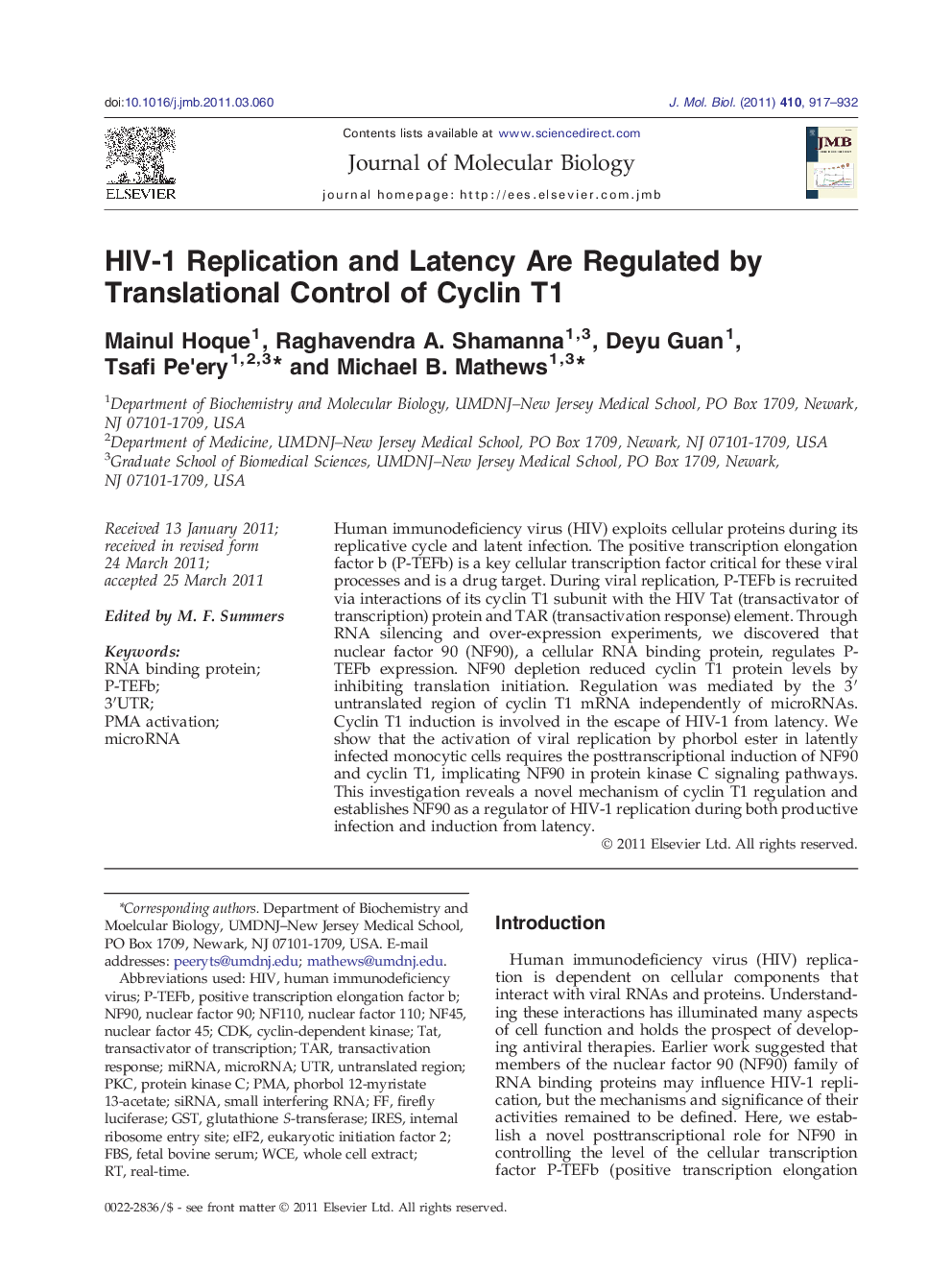| کد مقاله | کد نشریه | سال انتشار | مقاله انگلیسی | نسخه تمام متن |
|---|---|---|---|---|
| 2184993 | 1550368 | 2011 | 16 صفحه PDF | دانلود رایگان |

Human immunodeficiency virus (HIV) exploits cellular proteins during its replicative cycle and latent infection. The positive transcription elongation factor b (P-TEFb) is a key cellular transcription factor critical for these viral processes and is a drug target. During viral replication, P-TEFb is recruited via interactions of its cyclin T1 subunit with the HIV Tat (transactivator of transcription) protein and TAR (transactivation response) element. Through RNA silencing and over-expression experiments, we discovered that nuclear factor 90 (NF90), a cellular RNA binding protein, regulates P-TEFb expression. NF90 depletion reduced cyclin T1 protein levels by inhibiting translation initiation. Regulation was mediated by the 3′ untranslated region of cyclin T1 mRNA independently of microRNAs. Cyclin T1 induction is involved in the escape of HIV-1 from latency. We show that the activation of viral replication by phorbol ester in latently infected monocytic cells requires the posttranscriptional induction of NF90 and cyclin T1, implicating NF90 in protein kinase C signaling pathways. This investigation reveals a novel mechanism of cyclin T1 regulation and establishes NF90 as a regulator of HIV-1 replication during both productive infection and induction from latency.
Graphical AbstractFigure optionsDownload high-quality image (155 K)Download as PowerPoint slideResearch Highlights
► HIV-1 replication and escape from latency depend on NF90, an RNA binding protein.
► NF90 regulates the expression of the transcription factor P-TEFb posttranscriptionally.
► Translation initiation of cyclin T1, a P-TEFb subunit, is stimulated via its 3′ untranslated region.
► Cell activation by phorbol 12-myristate 13-acetate entails posttranscriptional control of NF90 and P-TEFb.
► NF90 is a potential target for antiretroviral drug development.
Journal: Journal of Molecular Biology - Volume 410, Issue 5, 29 July 2011, Pages 917–932